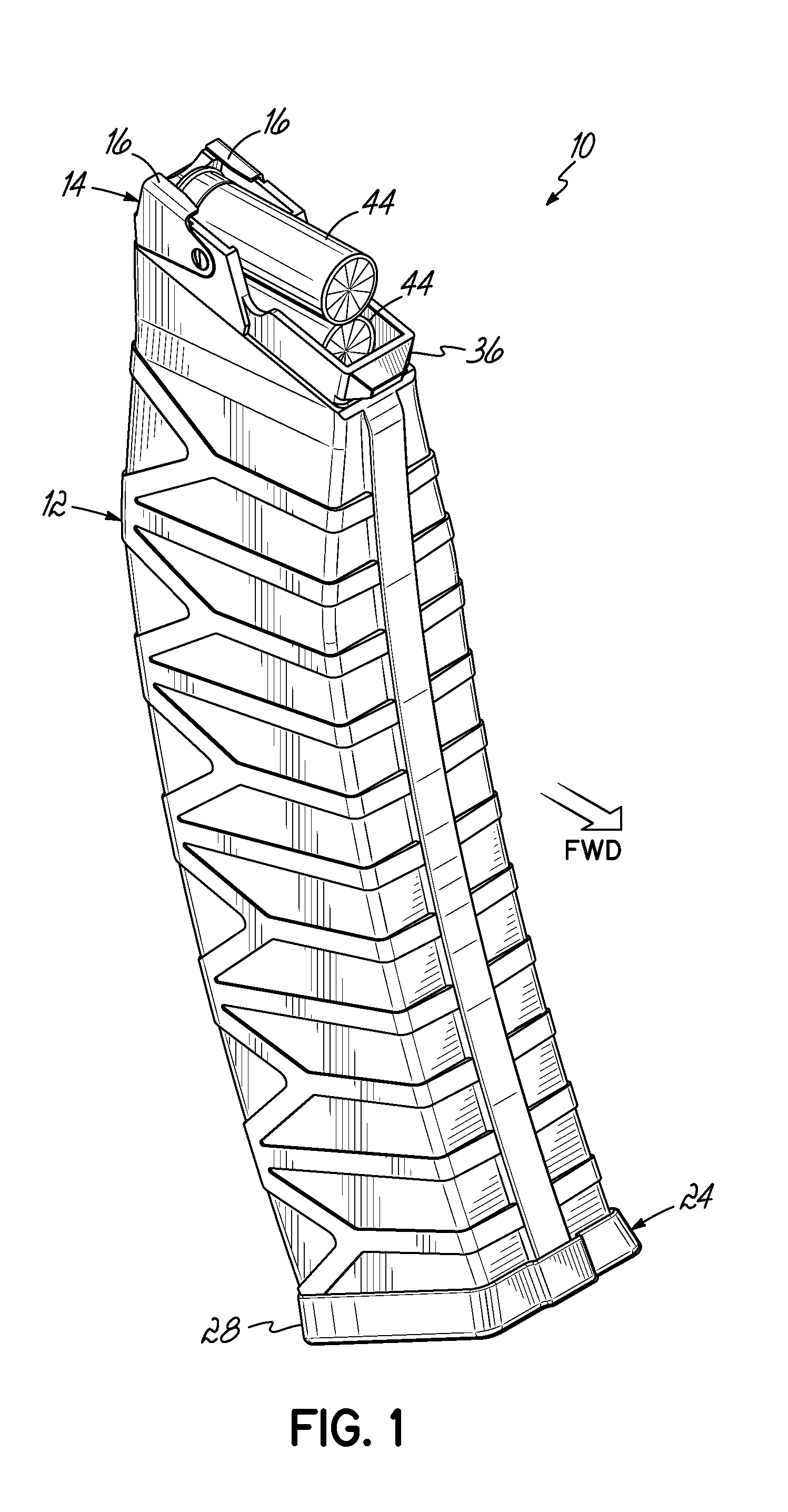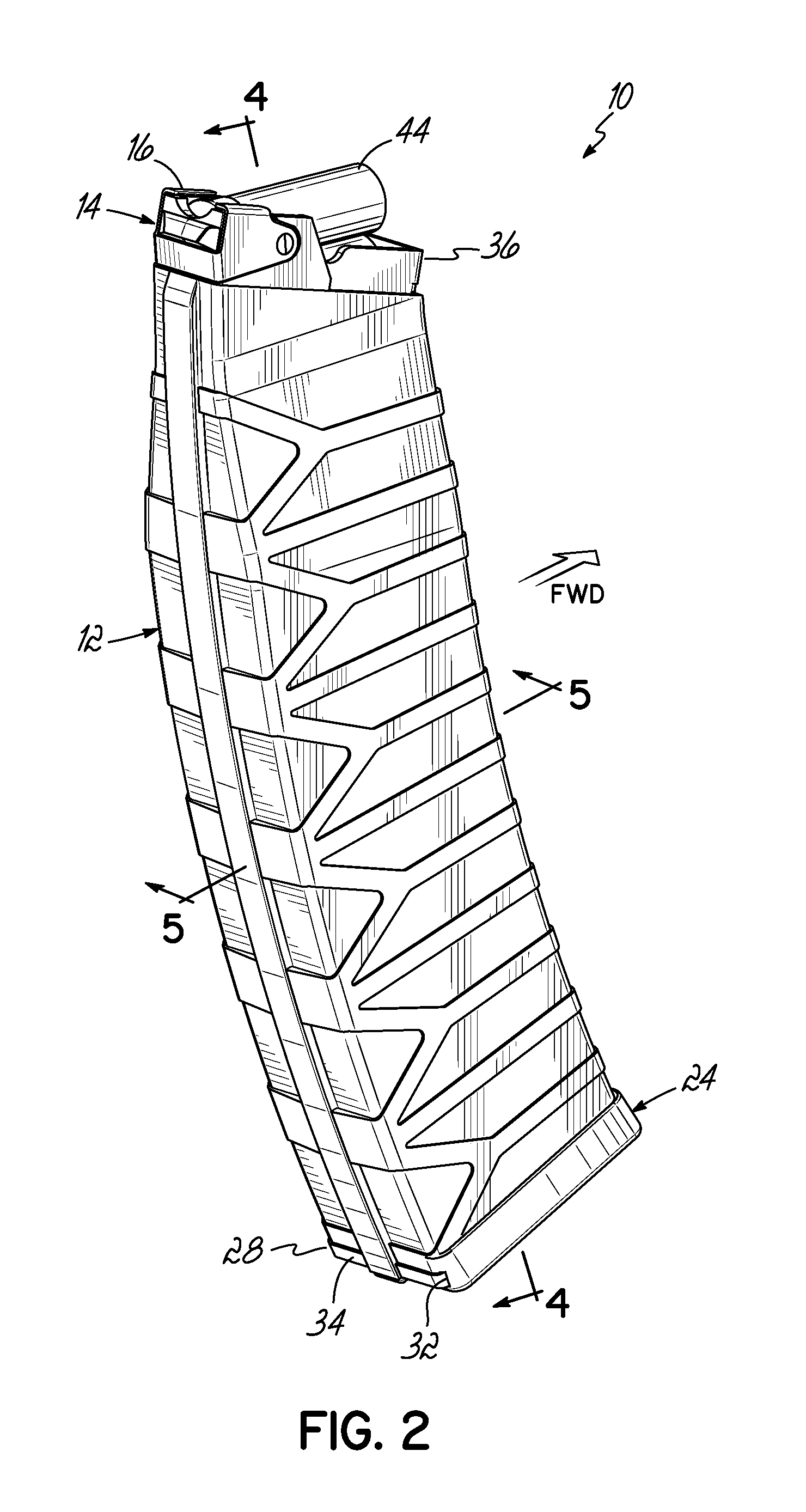Double Stack Box Magazine for Rimmed Cartridges of Varying Length
- Summary
- Abstract
- Description
- Claims
- Application Information
AI Technical Summary
Benefits of technology
Problems solved by technology
Method used
Image
Examples
Embodiment Construction
[0028]Referring to the various figures of the drawing and first to FIGS. 1 and 2, therein is shown at 10 a magazine according to a preferred embodiment of the present invention. Referring now also to FIG. 3, which is an exploded view of the various parts of the magazine 10, it includes a magazine body 12, a attached metallic member 14, which provides feed lips 16 and snaps in place at an upper end of the magazine body 12. Also shown is a follower 18, a coil compression spring 20, a floor plate guide 22, and a floor plate 24. As is standard with any box magazine, it is assembled by inserting the follower 18 through an opening 26 at a bottom end 28 of the magazine body 12.
[0029]A coil spring 20 is inserted through the bottom opening 26 behind or along with the follower 18. The spring 20 may have a rectangular shape (as shown), may be a cylindrical coil (not shown), or a combination of both, and its width or diameter may be tapered in cross-section along its length. In the present inve...
PUM
 Login to View More
Login to View More Abstract
Description
Claims
Application Information
 Login to View More
Login to View More - R&D
- Intellectual Property
- Life Sciences
- Materials
- Tech Scout
- Unparalleled Data Quality
- Higher Quality Content
- 60% Fewer Hallucinations
Browse by: Latest US Patents, China's latest patents, Technical Efficacy Thesaurus, Application Domain, Technology Topic, Popular Technical Reports.
© 2025 PatSnap. All rights reserved.Legal|Privacy policy|Modern Slavery Act Transparency Statement|Sitemap|About US| Contact US: help@patsnap.com



